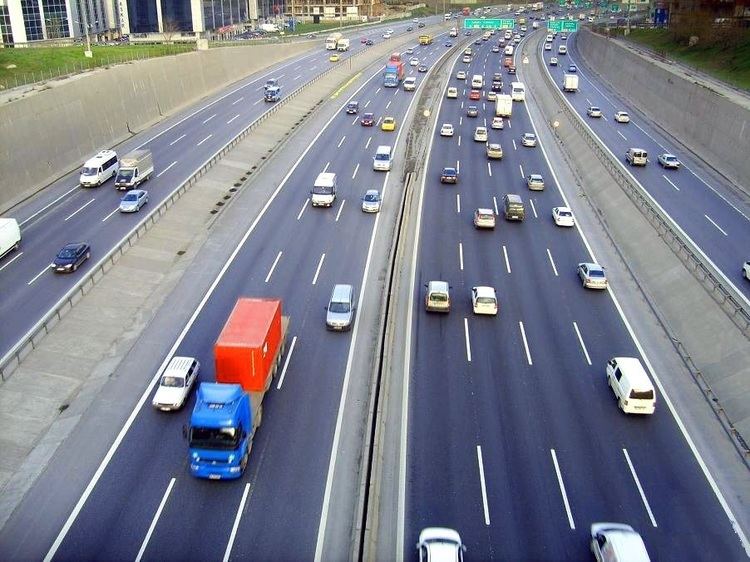 | ||
Motorways in Turkey (Turkish: otoyol) are a network in development. The length of the current network is 2155 km. The minimum speed limit on the Turkish motorways is 40 km/h and the maximum is 120 km/h. Most of the network is 6 lanes wide (3 in each direction). The motorway sign in Turkey is green and uses Highway Gothic typeface.
Contents
History
The motorway network in Turkey is relatively new. In 1980, the network was only 27 km long and was focused on Istanbul. Currently, great efforts are being made to expand the network. In September 2009, plans were unveiled for 12 new highway routes that are to be built by 2023, a total length of about 4773 km.
Toll
Most motorways are toll roads. The toll is based on the distance traveled. On most sections, the toll can be paid only with RFID-based HGS and OGS. Cash and KGS card payment methods have mostly been abolished in recent years. Only the newly opened Otoyol 5 and Otoyol 6 have sections were it is possible to pay by cash or with credit card. Apart from motorways, the other state roads in Turkey are free of charge.
The revenue from tolls in 2001 were still about $203 million, rising by 2012 to approximately $542 million. In 2012, the Bosphorus bridges saw 150 million vehicles pass and the other toll roads saw over 210 million vehicles. In 2015, both bridges were used by 141 million vehicles while the other toll motorways were used by 271 million vehicles, generating a total revenue of $391 million (both bridges and motorways combined).
Standards
Mainly because the country already has a wide network of double carriageways, the standards for motorways in comparison are very high. Each direction has at least 3 lanes, aside from the İzmit Bypass and a small stretch of the Otoyol 3 between Silivri and Esenyurt which only have 2. The lanes are each 3.75 meters wide. Most exits have a connection road, which helps avoiding wrong-way driving and illegal access to the road (bikes, tractors and horses are not allowed on otoyols).
The minimum speed is 40 km/h (25 miles per hour) and the maximum allowed speed is 120 km/h (75 miles per hour), although speeding is not punished under 132 km/h (82 miles per hour).
Alongside otoyols, there are resting areas, which are standardized as A, B, C and D type service areas. The D type is mainly a parking area. The C type has a fuel station added. The B type has a fuel station and a vehicle service station added. The A type additionally has a motel.
Dangerous stretches such as tunnels or bridges where there is often fog, exits, interchanges and service areas are illuminated.
Since gradients are expected to be very low and turning radii are expected to be very high, otoyols have many bridges and tunnels which makes them very expensive.
Projects
Under construction:
Tender Phase
Being planned:
2023 Targets
2035 Targets
